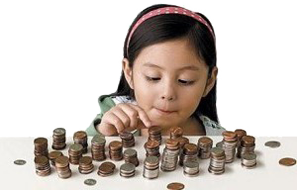Forex history.
Currency exchange has been taking place since the emergence of these same currencies and the development of trade relations between different countries. function was performed by money changers in the markets; in fact, they set the exchange rate depending on the purchasing power of a particular monetary unit.
function was performed by money changers in the markets; in fact, they set the exchange rate depending on the purchasing power of a particular monetary unit.
An important role was played by the metal from which the money was made; gold and silver coins were valued by weight, others according to the same purchasing principle and equivalent to gold.
In a more civilized form, exchange began in the 19th century, and the history of Forex itself began only in the second half of the 20th century.
The history of Forex actually began with the advent of the Jamaican currency system, the main point of which was the liberalization of gold prices. As a result, the concept of a floating exchange rate appeared.
The next event occurred on August 15, 1971, when Richard Nixon, who was then the President of the United States, announced the refusal to back the American dollar with gold.
After the adoption of the Smithsonian Agreement - December 1971, the price corridor allowed for changes in exchange rates was significantly expanded.
If earlier the US dollar exchange rate varied within 1%, then after the adoption of the agreement the corridor expanded to 4.5%, and in relation to some currencies up to 9%.
All these events served as the beginning of the history of the Forex market; subsequently, the formation of the market took place in the following stages: On
January 8, 1976, at a meeting of the IMF management, a complete replacement of the existing currency system took place.
It was at this meeting that it was decided to completely abandon the assessment of the value of currencies based on the gold equivalent. Now the rate was formed as a result of free trading based on supply and demand. After this, the Forex market began to develop at an impressive pace, with trading turnover growing from year to year.
• 1977 - 5 billion US dollars per day.
• 1987 - turnover increased more than a hundred times to 600 billion dollars.
• 1997 - daily volumes exceeded 1.2 trillion dollars.
• 2007 - up to 4.5 trillion dollars.
• Currently, daily turnover reaches $7 billion.
In addition to the rapid increase in turnover of the foreign exchange market, the composition of trading participants and the number of currencies participating in trading also expanded.
One of the most important moments in the history of Forex was the transition to electronic trading systems and the emergence of trader terminals.
It happened at the end of the twentieth century, thanks to the advent of the Internet. The next stage was a significant expansion of the circle of participants: now, in addition to banks, dealing centers and broker agents, ordinary traders can also participate in Forex trading, albeit through the same intermediaries.
